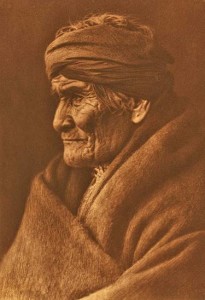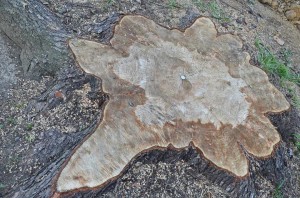
Geronimo defended Apache lands against Mexicans and Texan forces (by Edward S. Curtis)
One of the first books I read was James Fennimore Cooper’s, “The Last of the Mohicans.” Cooper also wrote, a book titled, “Redskins,” a term much discussed, and rightly so, these days.
In March 2013, Cooper’s hometown, settled by his father, retired the High School’s team name, the “Redskins.”
When I watched tv as a boy, or went to the local movie house, it was cowboys killing savage “redskins.”
Cooper wrote in his book, “Mohicans,” that, “History, like love, is so apt to surround her heroes with an atmosphere of imaginary brightness.”
Consider General Jeffrey Amherst, the Commander-in-Chief of the British Forces. In 1763, Amherst sought to exterminate Indians by injecting blankets given to American Indians with small pox.
Most Americans look at the large sculpted heads on Mount Rushmore of Presidents Washington, Jefferson, Lincoln and Theodore Roosevelt, and they see the founding fathers – they see heroes.
The surviving descendants of indigenous tribes observe a somewhat dimmer image of flawed men who sought to destroy their race.
In 1799, General Washington gave orders to “lay waste to all the [Iroquois] settlements around … that the country may not be merely overrun, but destroyed.”
In 1807, President Jefferson said, “…if ever we are constrained to lift the hatchet against any tribe [,] we will never lay it down till that tribe is exterminated or is driven beyond the Mississippi.”
President Lincoln in December 1862 ordered 38 members of the Dakota Sioux Nation hung for fighting for the food our government promised for their land – but then failed to provide.
President Roosevelt, a self-described Indian fighter, said, “I don’t go so far as to think that the only good Indians are dead Indians, but I believe nine out of ten are, and I shouldn’t like to inquire too closely into the case of the tenth.” Continue reading →



